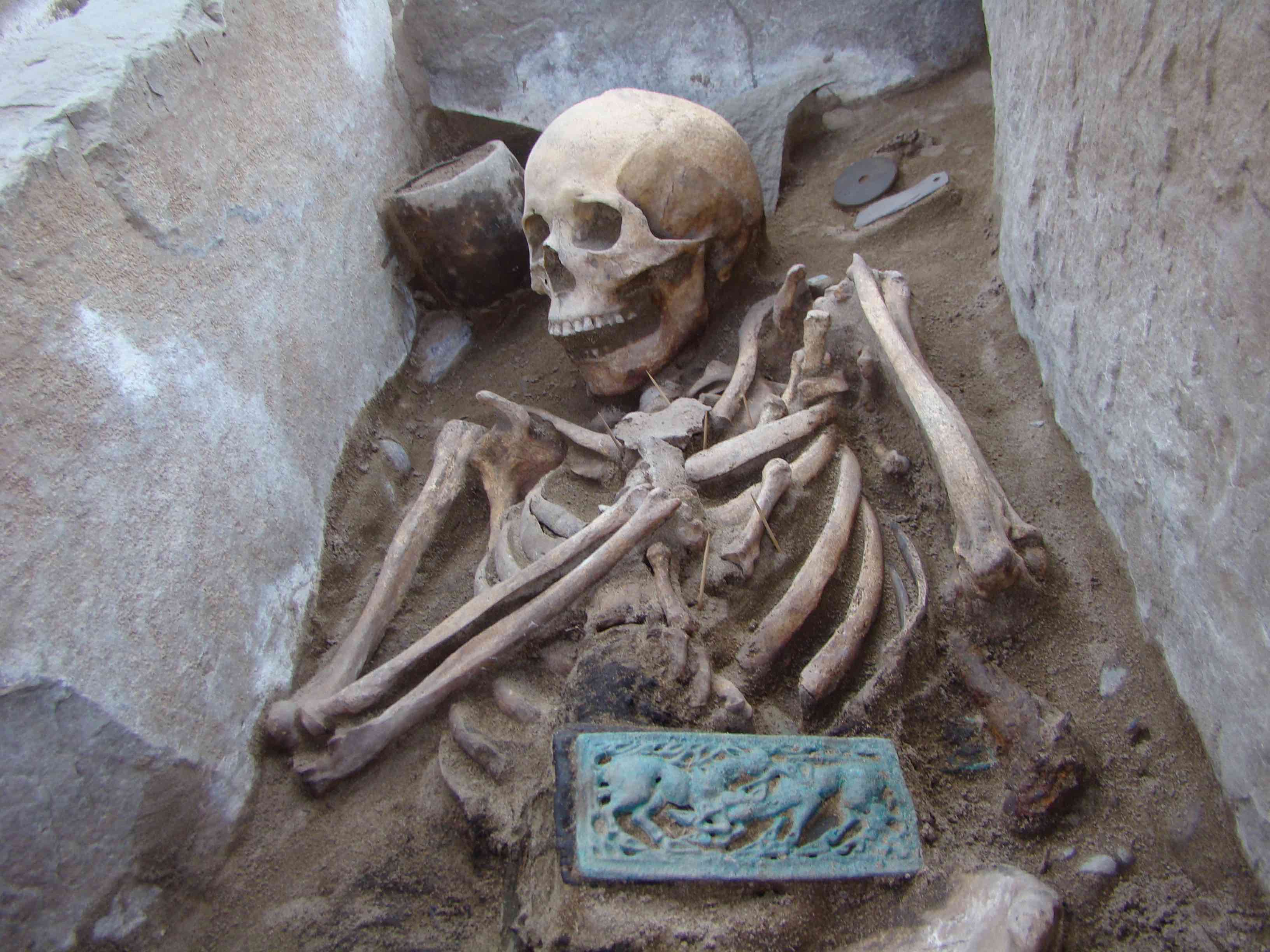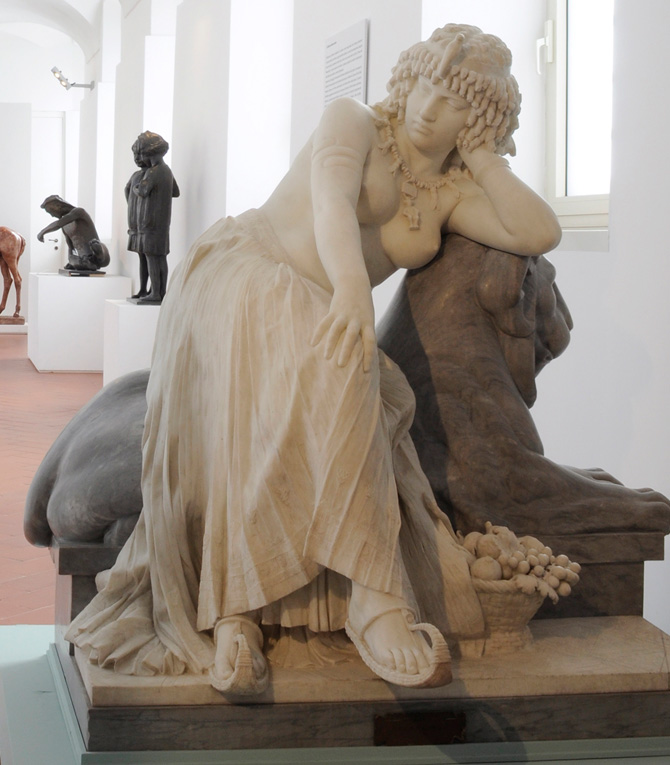Hun/Scythian burials at Terezin & Ala-Tey 4th C. BCE - 1st C. CE
"The artifacts from the cemeteries of Ala-Tey and Terezin allow a firm association of them with the Xiongnu Culture. At the same time, funeral rites retained certain traits of the preceding Scythian Culture, such as burials in stone cists and the burial position of the dead lying on a side with bent legs. A similar burial was excavated in the region in the 1960s at the cemetery of Urbiun-III, 6 km to the north of Terezin. The burial was in a stone cist dug into the pit of a wooden chamber grave of the Scythian period. The interred lay on the right side with bent legs. Near the head there were two ceramic vessels, to the left were remains of a bow of the Xiongnu type and bone arrowheads, and on the belt there was a bronze clasp with a scene of struggle between a tiger and a griffin (Savinov 1969: 104– 108). In fact we are dealing here with an exact parallel to grave no. 2 at Terezin, which lacks only the bronze clasp. Meanwhile, the majority of the burials at the cemetery of Ala-Tey are different. They are close to the Xiongnu type, such as burial featuring a supine position, occasionally inside a wooden frame, possibly a coffin. Most of the dead are found in stone cists. At the same time these different types of burial rites are undoubtedly contemporaneous and are found at a single, compact burial ground with similar grave goods and AMS dates.
Probably in this period (second to first centuries BC) in this key locality of the entrance of Yenisei into the Sayan canyon in Central Tuva (historically a traditional route from Tuva to the Minusinsk Hollow), new population groups appeared due to the northern expansion of the Xiongnu at the peak of their power. These people could have been either the Xiongnu (since burials of Xiongnu elite are known in Tuva, such as at the burial ground of Bay-Dag-II about 40 km to the east of Ala-Tey) or some other tribes related to them. A gradual but relatively quick cultural assimilation of the main part of the remaining Scythian population took place. It is during this period that the large bronze belt plaque buckles appeared in Tuva. These objects possibly arrived with the new people, who brought the tradition of manufacturing such buckles with them.
At the same time, the majority of the bronze artifacts from the cemeteries of Terezin and Ala-Tey are manufactured locally, which is in general confirmed by the results of metallographic analysis (Khavrin 2016: 105–107). These impressive highly artistic objects came to exist in Tuva within a brief time, and they mark a period of change in cultural traditions that distinguish the active participants, i.e., the bearers of the material culture of the Xiongnu. Additional information on this process possibly will be yielded by the expected results of a careful anthropological and genetic investigation of skeletons from the cemetery of Ala-Tey."
Archaeological research in this area is hindered by extreme natural factors. In the mid-1980s, the cemetery of Ala-Tey was found to be located at the bottom of the Sayano-Shushenskoe reservoir. Excavations are possible only within a brief time span each year. Waters from snow and ice thaw only go away by mid-to-late May, while at the same time, water feeding into the reservoir begins, so by as early as mid-June, the cemetery is submerged again. Water release starts in the end of November when it is winter already in this area. Thus the cemetery of Ala-Tey remains deep underwater during the most of the year. The usual water level in the reservoir is 540 m above sea level while the cemetery of Ala-Tey is located at 523 m above sea level (Fig. 1). Archaeological excavations are possible here for 3–4 weeks annually, but even then the work is hindered by almost daily storm winds blowing from the Sayan Canyon of the Yenisei that last for hours; sand storms produced by the winds often make it impossible to work."
-Marina Kilunovskaya & Pavel Leus. Archaeological discoveries in Tuva: excavations of the Ala-Tey and Terezin cemeteries of the Xiongnu period in 2015–2016
 |
| Fig. 14. Female gravel AT1/42 with a bronze buckle depicting horses. |
 |
| Belt buckle with dragon fighting two tigers. |
Source/Quote:














































































Comments
Post a Comment